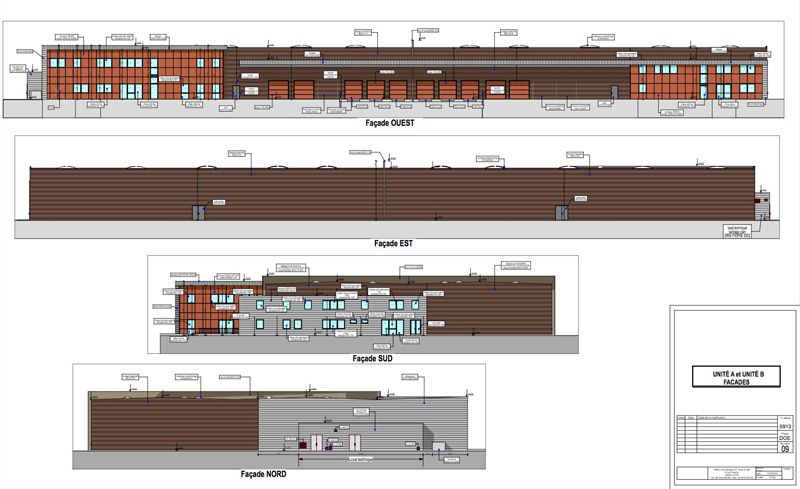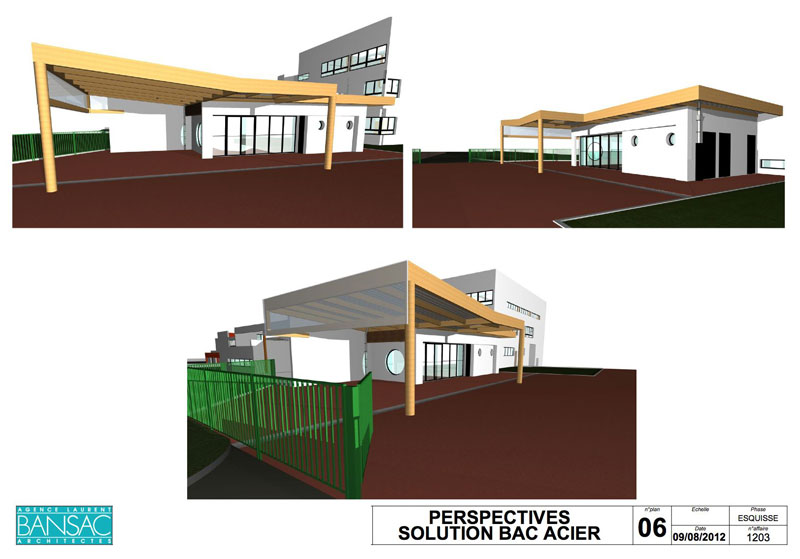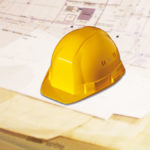Architectural plans are graphic and technical representations of a house or building which, as a whole, provide an understanding of its various characteristics before, during and after construction. Thus, for all applications for construction permits, standard architectural plans will be indispensable for the assessment of the construction permit dossier by the administrative authorities.
Through the realization of a set of drawings, from the free-hand sketch to the realization of detailed technical drawings by computer, the architect transforms the needs and wishes of his client, the project owner. Thanks to his technical expertise and aesthetic sensibility, the clients’ preferences are formatted into a set of increasingly precise plans that guide the proper integration of the different elements and different specialties during the construction.
Numerous graphic conventions are put into practice during the realization of the plans of a house or building in order to facilitate the reading and understanding of the different geometrical, technical, aesthetic and practical aspects, by the various users of these plans.
The different architectural plans
Various plans, drawings, sections, etc. are collectively referred to as architectural plans. Each of these graphic representations is established for the use by one or more types of persons. Each plan will therefore be designed to expose aesthetic, technical or geometric information to its users with concerns for their specialty. They can be used for the decision-making relating to the construction project owner or the project management, the execution by the construction contractors, for administrative or technical or legal control or verification, etc.
The term of “plans” is an abusive name for the various architectural drawings, as the term plan should normally be used only for representations along a horizontal axis. Nevertheless, since the plans are often the most important and the most numerous with regards to all the architectural drawings of a building, to identify the different elements and to construct a building, this misrepresentation is commonly used instead of the larger and more accurate terminology of drawings.
The drawings, however, generally also gather projections, in particular sections along different vertical planes – facades, views of important elements of a building – projections in three dimensions, according to certain angles, such as 45 degrees perspectives with vertical and horizontal lighting.
Floor plan
The floor plan is a view from above showing the different spaces and limits (walls, doors and windows) of a floor of a house or building in the manner of a geographical map. The floor plan is usually the most important of the architectural plans.

Site plan
A site plan is a general view of a project that includes the entirety of a property, accesses, connections to various water and sewage systems, electricity, telecommunications, and related structures that may represent an interest or a constraint. The site plan is used to represent a project within the entire site, its configuration and its orientation in accordance with the rules of urban planning, in the preparatory stages of a project, before the detailed plans are created.
Elevation
An elevation represents the exterior aspect of a building, most commonly a facade of a building and the elements visible from the opposite direction. It is a geometric projection along a vertical plane parallel to one of the facades.

Section
A section, is a cross-sectional view showing a house or building cut along an interesting vertical plane for understanding the structure, in particular, to present the relationships between the different levels.

Perspective
A perspective is a three-dimensional representation of a house or building or one of its elements that facilitates understanding of the relationships between its different sides.

Detail view
A detail view shows a particularity of the building on a larger scale. These views are used in particular to present certain complex elements (intersections, openings, edges…), techniques (products, methods…) or aesthetics (finishes, moldings, textures…) that could not be properly seen on a smaller scale.





40 x 60 metal building